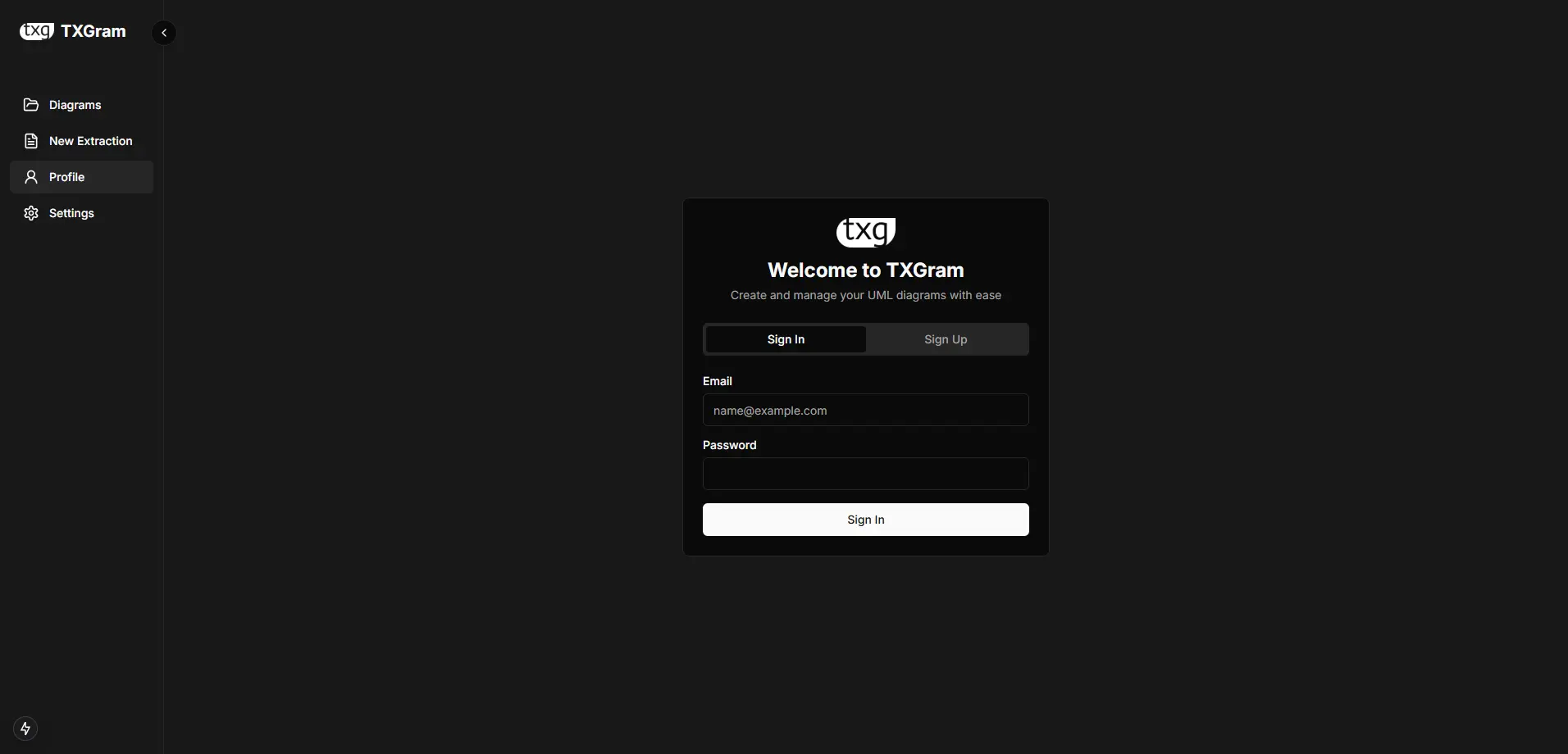
TXGram App
Txgram is an application that generates UML diagrams from user-provided textual descriptions and, conversely, converts UML diagrams back into textual descriptions. It follows a Model-Driven Engineering (MDE) approach and operates through several key stages :
- User Input: The user provides a description in natural language.
- LLM Transformation: A Large Language Model (LLM) interprets the input and produces a structured script in the form of user stories.
- DSL Conversion: The script is then transformed into a Domain-Specific Language (DSL).
- UML Diagram Generation: The DSL is converted into a format compatible with the PlantUML API, which is then used to generate the corresponding UML diagram.
Features
1. Natural Language Text Input
- Allow users to input system or process descriptions in natural language.
2. Voice Command Input
- Integrate a speech-to-text API to enable users to dictate their descriptions vocally.
3. Interpretation via LLM
- Use a Large Language Model (LLM) to analyze and structure the textual descriptions into user stories, ready for diagram generation.
4. DSL Conversion
- Convert user stories into a Domain-Specific Language (DSL) to standardize and structure the information for further processing.
5. Automatic UML Diagram Generation
- Transform the DSL into UML diagrams using visualization APIs such as PlantUML.
6. Reverse Conversion: Diagram to Text
- Use an image-to-text API to analyze UML diagrams and extract understandable textual descriptions from them.
7. Diagram Export and Sharing
- Enable users to download or share the generated UML diagrams in multiple formats (e.g., image, PDF).
8. Versioning and History Management
- Allow users to track versions and history of their diagrams, with the ability to revert to previous versions.
Overview
1. Langium-Based DSL Development
- Function: Defines a custom textual Domain-Specific Language (DSL) used to structurally represent UML concepts based on user input.
- Tech Stack: TypeScript, Langium, Node.js.
- Key Features:
- Custom grammar design for describing systems using a structured DSL.
- Validation rules to ensure the correctness and consistency of the models.
- Automatic generation of diagram-compatible output (PlantUML syntax).
2. Next.js Frontend
- Function: Serves as the user-facing platform where users input descriptions, view generated diagrams, and interact with various features like import/export and reverse conversion.
- Tech Stack: TypeScript, Next.js, Tailwind CSS, Figma.
- Key Features:
- Natural language input interface and diagram preview window.
- Text-to-diagram and diagram-to-text workflows.
- Integration with PlantUML for live rendering of UML diagrams.
- Export options (PNG, PDF) and diagram sharing functionality.
3. LLM-Powered Input & Conversion Services
- Function: Enhances the user experience by allowing voice input and reverse diagram recognition, using AI-driven services.
- Tech Stack: Llama 3.2-Vision, Whisper API.
- Key Features:
- Speech-to-text input for generating textual system descriptions from voice commands.
- Image-to-text conversion to extract structured descriptions from UML diagram images.
- Natural language interpretation of input using a Large Language Model (LLM).
Setup and Installation
1. Prerequisites
- Node.js
- npm or yarn
2. Setup
- Clone the repository.
- Install the dependencies using npm or yarn.
- Configure the environment variables.
- Run the application.

